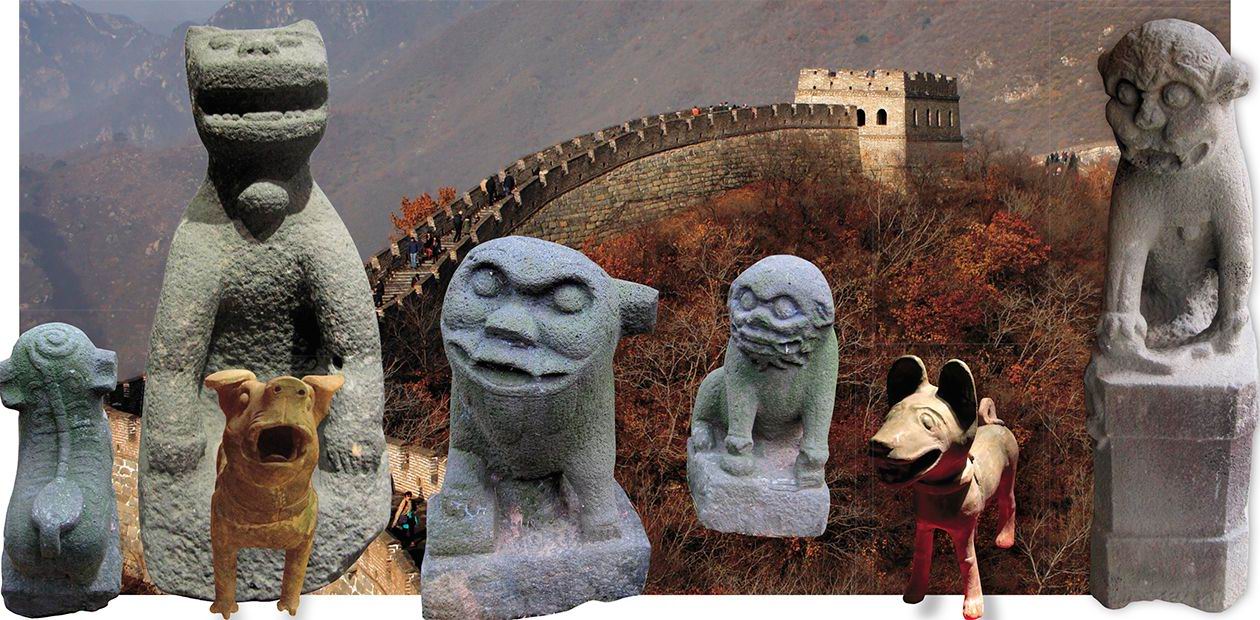The town and the dogs (La ciudad y los perros): the Chinese version
Leizhou is a small (not only by the Chinese, but by Russian measure too) cozy town in the far south of China, which looks exactly like hundreds of other coastal towns and villages. There is a difference though – many centuries ago it was captured by a myriad of stone dogs. They peer out of bushes growing near bridges, wells and crossroads, guard the still of the cemeteries, but mostly bunch together in parks and gardens. Over 10,000 sculptures of dogs were found in and around the town (Chen Zhijian, 2008). The authors went on a visit to these remarkable stone kennels urged by their extensive study on the role of dogs in the Chinese material and spiritual culture
In China, stone statues of dogs occur not only in Leizhou but all along the coast of the Gulf of Tonkin of the South China Sea, Guandong province, Guangxi-Zhuang autonomous district, and on the Island of Hainan, as well as in the north of adjacent Vietnam. Some statues are found in the mountaneous province of Yunnan and even as far as Singapore.
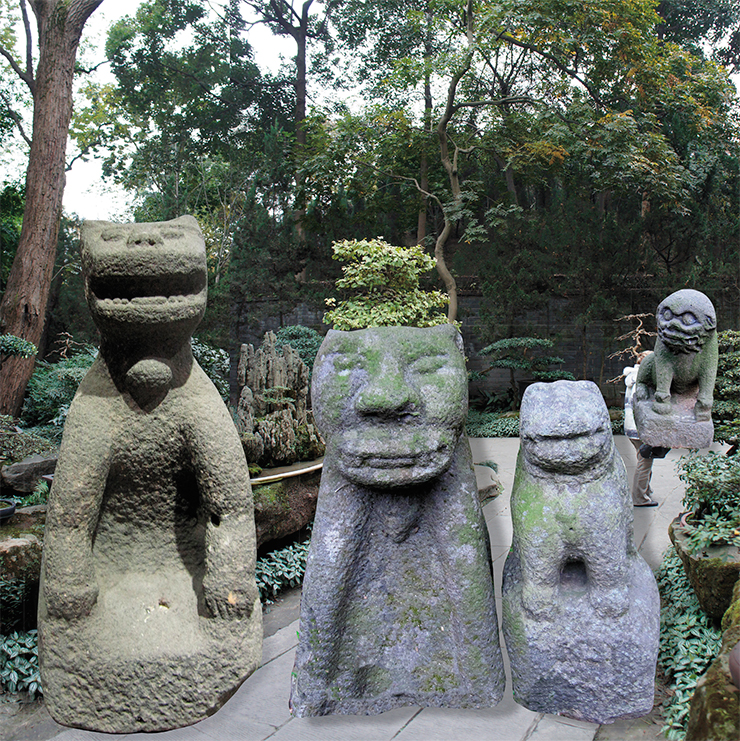
Maria Kudinova began looking for the answers. At first, it was a successfully defended senior thesis, which urged further postgraduate studies and doing the Candidate’s thesis. The best academic supervisor for the subject was undoubtedly Academician V. I. Molodin, both because of the period under study (Neolithic – Paleometal) and because of his continual reference to Chinese sources. Viacheslav Ivanovich, however, was very choosy about taking new students, especially if they had not proved themselves at fieldwork. This is why I decided to resort to a military trick. Knowing that the Molodins are passionate about their dogs, I kept slipping in, like an incantation, “Masha (Maria) is mad about dogs, you see” (which actually is pure truth, so it was an easy job. The spell worked, and a motivated and profound search for the new sources of the dissertation theses started. One of the lines of this search brought us to Leizhou
Virtually all the statues are hewn out of basalt; they vary considerably in size and appearance. The largest are up to 1.5 meter high and weigh about 800 kilograms, while the smallest do not exceed 10 centimeters and 0.5 kilogram. Most statues are the size of domesticated dogs. The figures of dogs are often set on special stone or brick pedestals in the form of columns 0.5 to 5 meter high. The animals are shown in different postures: standing, sitting and lying, trampling a snake or a tortoise with their front paws. The reproductive organs are often highlighted. The females often have one or two puppies (Mu Ye, 2008). The additional attributes hewn in stone include pompons, eight trigrams, fishing nets, stone drums, crook-neck pumpkins (looking like water flasks or drug bottles), copper coins or packs of coins, seals, scrolls with Buddhist sutras, Taoist tablets with incantations, etc. Some dogs wear a mirror on their backs to shoo away evil spirits. On their necks, they often have a small bell in the shape of a peach, which symbolized longevity and eternity.
In medieval Chinese sources, Leizhou was referred to as the birthplace of the thunder deity Lei-gong (Lei-zu). A version of this legend is found in the section Tale of the Lei People of the Taiping Guangji (Extensive Records of the Taiping Era): “Once a Leizhou citizen had a dog with twelve ears. Every time before going hunting, the dog was beaten and the number of ears that began to stir predicted the take… One time, all the ears stirred but the dog did not catch any prey. It ran to the seashore and began barking. The citizens saw twelve big eggs on the shore. They brought the eggs into a house, and then all of a sudden, rain and wind came as though from this house. When the storm was over, the eggs were found broken, there was only shell left. Later, the citizens took the pieces of the shell and made a seasonal sacrifice to them. Up to now, the families that got the bits of the shell are distinguished.” Besides, there is a legend in Leizhou that the dog became the animal-companion for the god of thunder – the Celestial Dog. From time to time, the god of thunder fears that the sun will burn all life and sends the Dog to eat the sun. Then the solar eclipse happensChinese researchers distinguish several “breeds” of stone dogs: greyhound, Pekinese, Shar Pei, shepherd dog. What breed, however, are dogs with three heads or an anchor, four-sided battle-flail, scorpion’s sting or Taoist large fan for a tail? Evidently, these sculptures depicted not real but mythical creatures.
Mr Stone Dog
As has been said, many statues have undergone considerable metamorphoses, almost losing their doggy exterior. Often, they look more like monkeys, bears, tigers, lions, cats or frogs, or have some features of these animals. The statues can have anthropomorphic traits — for example, a dog’s body and a human face. Yet, in Leizhou all the zoomorphic and zoo-anthropomorphic sculptures are referred to as “stone dogs.” Images combining the features of different animals or these of an animal and a human date back to ancient totemic beliefs.
The statues range from the largest, 1.5 meter high weighing about 800 kilograms, to the smallest, no more than 10 centimeters high weighing the maximum of 0.5 kg. The statues could be mounted on special stone or brick pedestals shaped like columns, 0.5 to 5 meter high
The dogs’ bodies are covered with various ornaments, often having a benevolent meaning: triangles, swastikas, chrysanthemums, lotuses, banana leaves, tortoise shells or phoenix tail pattern, etc. Besides, the statues bear engravings like “Mount Tai” (China’s best-known sacred mountain), “Great Emperor,” “Emperor,” “To rule and pacify,” “To guard mountains,” “Stone that wards off the evil,” “Unicorn (animal announcing good news) is here,” “Joy,” “Felicity,” “Longevity,” etc. The hieroglyph “Wang” (king, ruler) used to be carved on the dog’s forehead, just as in other parts of China this hieroglyph was placed on the statues of the tiger, king of beasts and a terror to demons.
To depict curls of hair or muscles of an animal, they often use scroll or meander designs — the artistic device resembling the zoomorphic ornaments of the animal style. Chinese researchers refer to it as the “ cloud and lightening” pattern. This traditional ornament of the ancient Austric peoples, who used to populate Southeast Asia and the adjacent areas, is connected with the totemic worship of thunder. It can often be seen on the bronze drums dating to the late stage (end of the 1st millenium B.C. to the beginning of the 1st millenium A.D.) of the Dong Son culture, which existed in the northeastern part of the Indochinese Peninsula, and on local petroglyphs dating approximately to the same time. The decoration of the statues with this design may be attributed to the assumed connection between the dog and the thunder deity.
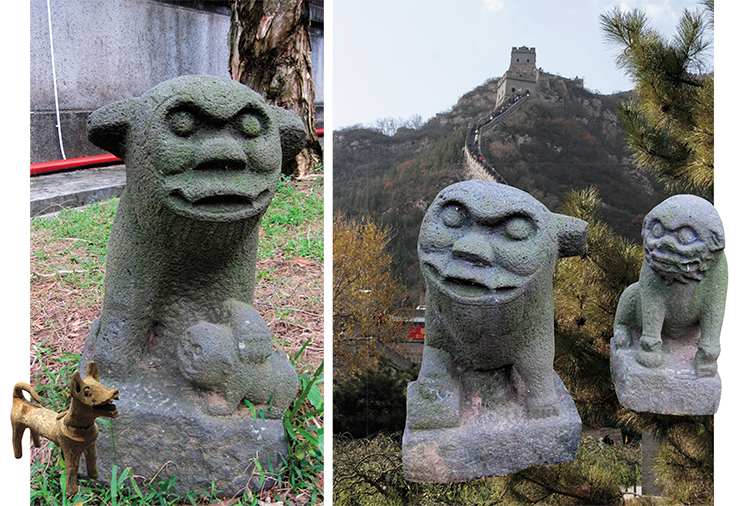
The statues could be painted or coated with black varnish. In some villages and settlements, it is still common practice to renew paint or vanish every year. The whole of the statue could be painted (at present, yellow is the most popular color) or sometimes it was just the muzzle. A red thread, one or several red ribbons, a red scarf or a bow is tied around the dog’s neck; the head is decorated with a red kerchief.
The appearance the dogs depended on their purpose. The inhabitants of the peninsular divided the dogs into “military” and “civilian.” The former group included statues warding off evil spirits (guardian spirits of doors, villages, towns, etc.) and statues “supporting the Buddhist dogma.” The latter group united the rulers of wind and rain, deities responsible for fertility, childbearing, richness, and longevity.
The statues of dogs are still made today, and dogs continue to be worshipped as protectors, child givers, and weather rulers. They are called the Honorable Lord, Mr Stone Dog, Great Teacher, Prince of Mount Tai, and so on. Aborigines regularly renew paint and varnish on the statues, erect columns-pedestals and arrange special room to keep the stone dogs. In front of some statues, tables for burning incense and tea are put up. On the 1st and 15th day of every lunar month, during weddings and funerals, the locals burn incense in front of the statues, offer them tea, and in some villages, meat and rice. On the 30th day of the New Year, the statues are decorated with red ribbons and asked for prosperity in the new year. In some areas, old people treat the stone dogs with three bowls of batata soup or rice and pork on the 1st and 15th day of the first lunar month. Legends and beliefs connected with stone dogs, such as the conviction that the statues can foresee floods or punish those who try to destroy them, are widely spread.
That’s where the dog lies!
The pronounced worship of the dog representation (ritual flogging does not count) in Leizhou is not a local cult but a manifestation of the all-China Celestial Dog myth, which is especially widespread in the south of the country. Tiangou (Celestial Dog) is the generic name of a number of objects and characters, quite frightening at times. The earliest mention is found in the Classic of Mountains and Seas: «There is an animal there that looks like a fox but has a white head. It is called a celestial dog. Its call is like mewing. It can protect you from bad fortune» (translated from Chinese to Russian by E. M. Yanshina).
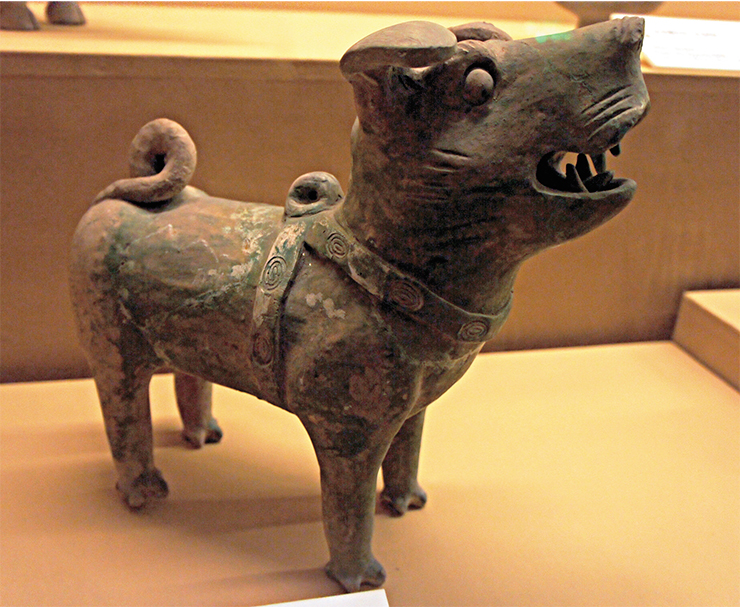
In later sources, the name “Celestial Dog” referred sometimes to celestial bodies. In southern China, they believe that it was the Celestial Dog that gave people cereals: it brought the corns of all cereals from the sky and fed them to people.
At the same time, there is a common belief that the Celestial Dog is a malevolent demon preventing a family from having sons and shortening the lifetime of the newly-borns: it can attack baby boys and eat their liver. It is said that in ancient times this bloodthirsty creature was a maiden who died before getting married. Having turned into an evil spirit and settling down on a star, she sought to kill children so that somebody would take her place and she could be re-born as a human. To protect themselves from this demon, the Chinese used to depict archers shooting arrows into the Celestial Dog (sometimes, the archer was Hou Yi, who shot down the extra suns) and give special amulets to their children — a mix of baby’s and dog’s hair was sewn into the baby’s clothes (Vasiliev, 2001).
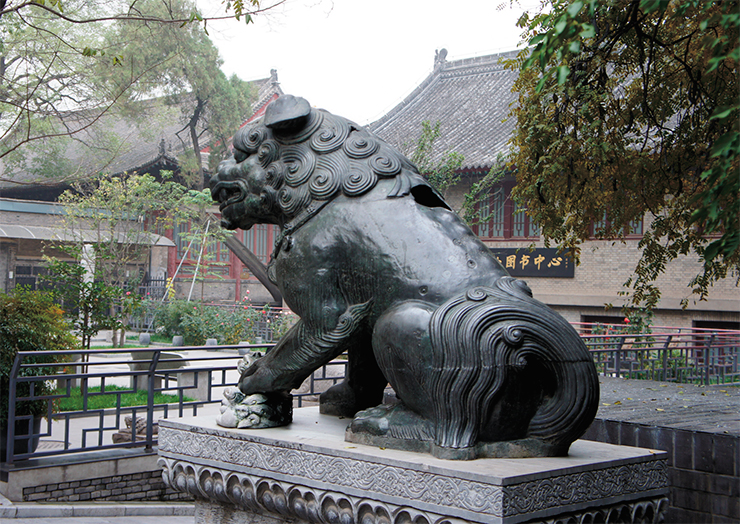
The Celestial Dog could act as a protector against evil forces. It was considered the only savior from the evil spirits that could take the form of huge owls and other birds. Ouyang Xiu (an outstanding man of letters, 11th c.) quotes a legend of a ten-headed and ten-beaked bird that once came to Zhou-gong (the Duke of Zhou), a legendary ruler of Antiquity. In truth, the bird was an evil spirit. It honked loudly, which depressed the ruler. He ordered to kill it but nobody was able to do it. Then the Sky sent the Celestial Dog and it bit off one of the bird’s heads. Since then, the bird’s wound has been bleeding, and its blood is deadly. The Nine-Headed Bird, a Chinese fairy tale, tells a similar story of a confrontation between an evil spirit in the shape of a ten-headed bird and the Celestial Dog, which protected people from the bird and bit off one of the heads (Eberhard, 1968).
In late Middle Ages, the Celestial Dog was Erlang’s helper. In late mythology, Erlang Shen (“the second son”) was a water deity and dam protector, who helped regulate torrential floods. In Chinese dramas, he acted as a fighter against demons. Also, he was believed to be the archer who killed nine suns. The temples devoted to Erlang often had the depictions of his dog — the deity’s companion and assistant in his fight against evil forces.
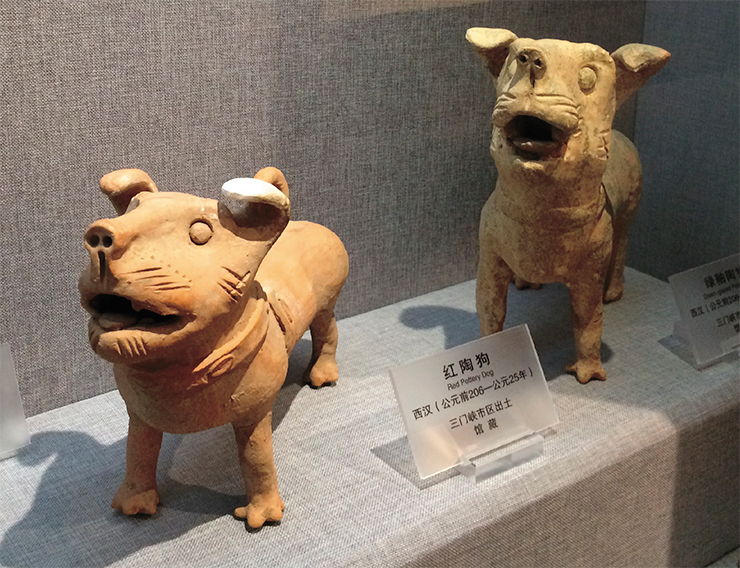
Originally, Erlang was a Sichuan deity and could be replaced by Zhang Xian, whose worship also started in Sichuan and then spread all over China, approximately in the 11th century. Zhang Xian (Zhang the Celestial Being) was venerated as the deity giving male offspring. In Ancient China, archery played an important part in the birth ritual. When a boy was born, it was custom to hang a bow made of mulberry tree on the left wing of a door (because the left side was associated with masculinity, Yang). Then they shot arrows from this bow into the sky, the earth, and four corners of the world, “where man’s activities take place.” In Sichuan, this practice transformed into the Zhang Xian cult, though the dog was no onger his helper but an enemy he shoots at. This change of «polarity» is not rare in mythology. Whatever the case, Zhang Xian keeps the Celestial Dog under control, chases it away with his arrows and subjugates it.
In Chinese folklore, the Celestial Dog was also held responsible for solar and lunar eclipses. They believed that only tom toms and drums and the fearful noise made on the Earth were able to shoo away the Celestial Dog and prevent it from devouring the celestial body. This belief is among the oldest. A dog swallowing the Sun or the Moon is depicted on Neolithic pottery.
М. А. KUDINOVA: Studying ancient myths is an exciting part of our research. Chinese comparative mythology has attracted many scholars. Of great help to me were V. V. Yevsyukov’s works, who identified the main mythologems basing on the designs on Yangshao pottery; a true discovery were the writings by O. M. Freidenberg, who had formulated the basic principles of structuralism long before C. Levi-Strauss.The “spiritual feast,” however, was preceded by a scrupulous analysis of the archaeological findings discovered by our Chinese colleagues. At present, we know at least 65 human burials based at 19 Neolithic sites where dogs (one to six animals) or some parts of their bodies (skulls, mandibles) were buried. In addition, there are over 40 sites with individual dog burials in sacrificial or ash pits. The context of these findings suggests that dogs were used in funeral and memorial rites and also played the role of a «building sacrifice,» which must be attributed to the common belief that this animal protects against evil forces.
In dealing with the Chinese archaeological material, of huge assistance was the fieldwork experience I gained during the Tartas archaeological expedition led by Academician V. I. Molodin and his closest disciples. I am sure that if you have gone through «Molodin’s school» in archaeology, you can cope with any research task
Widely spread is the tale “The dog swallows the Sun and eats the Moon.” It tells of an archer who once shot at the Sun and the Moon, and darkness descended on the Celestial Empire. People asked the Celestial Dog to return the Sun and the Moon and promised it 50 dou (traditional volume unit, now equal to 10 liters) of rice. The dog dispatched the errand but the people did not give it the rice they had promised. Since then, the dog, when hungry, eats the Sun or the Moon. Similar myths are common for many peoples and ethnic groups of Southern China.
The complex image of the Celestial Dog must have derived, in part, from the myths about Archer Yi (Hou Yi). This myth was the most popular and clearly articulated solar story of Chinese mythology. It was first set out in writing in the Huainanzi text (2nd c. B.C.). During the reign of the wise-perfect ruler Yao, the Celestial Empire was faced with a major scourge: all of a sudden, ten suns appeared on the sky at the same time. The suns, shaped as ravens with three feet, mercilessly blazed down upon the Earth. Seeing the sufferings of the people, gods sent the Archer, who shot down with his arrows nine suns out of ten and thus restored the World Order (Kravtsova, 1994).
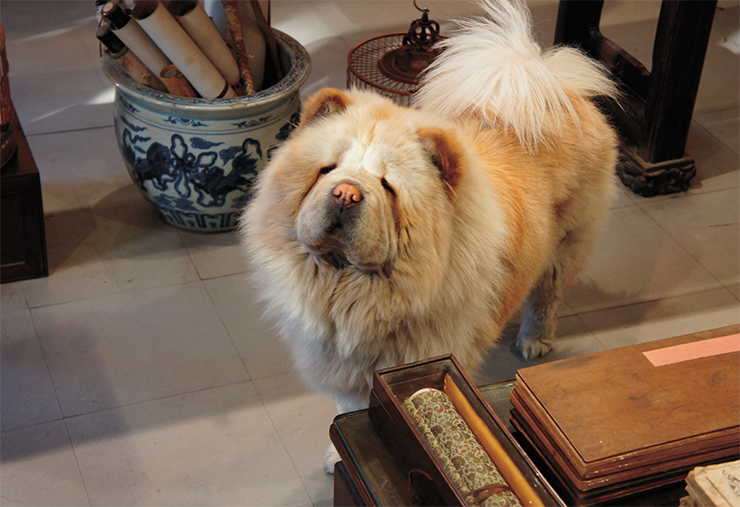
Another legend of the Archer Yi, clearly of literary origin, combines several plots and characters. It is immensely popular in China, especially in relation to the Mid-Autumn Festival. According to this legend, after Hou Yi had shot at nine suns out of ten and saved people from disaster, the Queen Mother of the West (ruler of the West) awarded him with immortality potion. However, the Archer’s wife, Chang’e, drank the elixir alone and ascended to the sky. Seeing this, Hou Yi’s hunting dog Heier (Black Ear) ran barking into the house, licked what was left of the potion and also ascended to the sky. Hearing Heier’s barking, Chang’e hid on the Moon but it was not that easy to hide from Black Ear. It reached the Moon in one go and swallowed it together with Chang’e. Then the Queen Mother of the West made Heier the Celestial Dog and ordered it to guard the Southern Celestial Gate. Heier spit out the Moon and Chang’e, who has lived on the Moon ever since.
According to E. M. Yanshina, the story of shooting the suns dates to the rituals aimed at the return of the sun and spring revival, which existed at the time of hunting economy. They were similar to the space hunt ritual popular with the hunting peoples of the North. The prototype of the destruction of nine suns out of ten was the “ritual hunt-chase” of the god-hunter for the celestial body” (Yanshina, 1984). This hypothesis of the origin of this myth is supported by the zoomorphic depiction of the sun as a raven.
To sum up, the myth about shooting the suns derives from the rituals symbolizing the establishment of the World Order or revival of life with the coming of spring. The crucial components of this mythical-ritual complex were the ideas of the suns multiplicity and their ornithomorphic embodiment, as well as the destruction of “extra” celestial bodies by the heroic archer. Closely connected with this complex is the Celestial Dog mythologem.
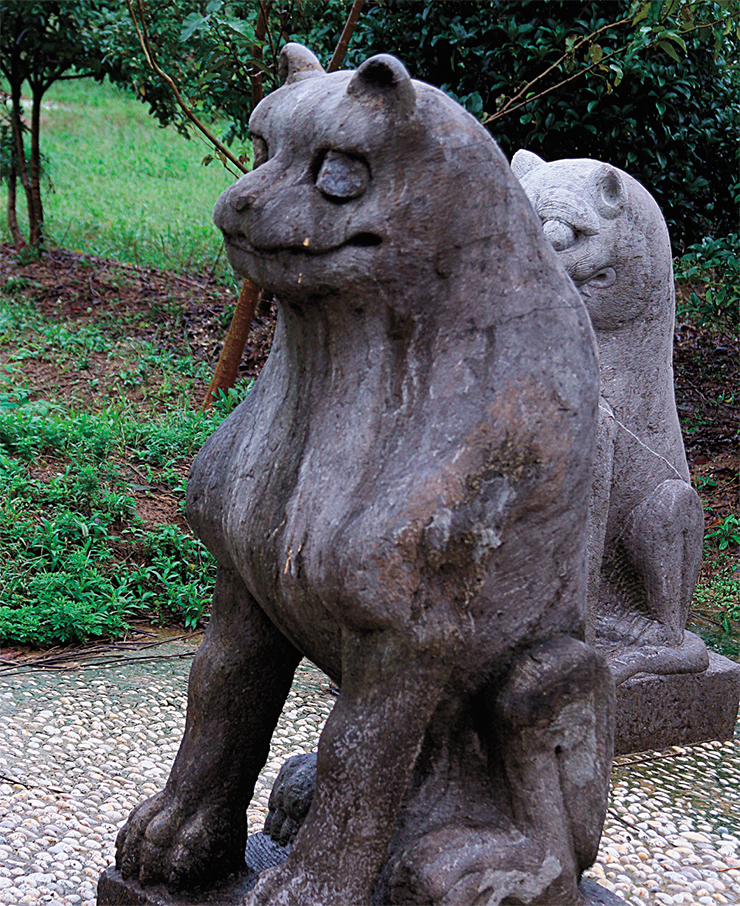 In mythology, the so-called metonymic transfer often occurs: the number of characters turns into the number of the body parts of one of the characters and vice versa. The nine solar birds from the myth about Archer Yi, connected with the ancient solar myths, could have turned into the nine-headed bird. There are myths attributing the origin of solar and lunar eclipses to the Celestial Dog’s attack on the celestial bodies. In this way, the story of the Celestial Dog’s attack on the evil demon in the form of a nine-headed bird may go back to the solar myth.
In mythology, the so-called metonymic transfer often occurs: the number of characters turns into the number of the body parts of one of the characters and vice versa. The nine solar birds from the myth about Archer Yi, connected with the ancient solar myths, could have turned into the nine-headed bird. There are myths attributing the origin of solar and lunar eclipses to the Celestial Dog’s attack on the celestial bodies. In this way, the story of the Celestial Dog’s attack on the evil demon in the form of a nine-headed bird may go back to the solar myth.
Let us now return to the images of Erlang and Zhang Xian — Celestial Dog owners and in combination protectors both from it and from other demons. It is known that they, as well as Hou Yi, were heroes-archers. According to W. Eberhard, their figures are closely related and the myths about them originate from the South. A proof of their antiquity can be the findings made at the Sanxingdui archaeological site (dating to 16th‑12th cc. B.C.), Sichuan Province, where a bronze model of the World Tree was found in a sacrificial pit, with nine (possibly, ten) solar birds perching on the tree branches (Komissarov, 2010).
It has been said that Erlang’s companion and helper was the dog (celestial maybe) that Zhang Xian bent to submission by shooting arrows. As is known, in mythology initially zoomorphic characters may gradually evolve into anthropomorphic, with their zoomorphic features turning into the attributes and symbols of the riding animals, animals-companions or sacrificial animals of the character in question. This was pointed out by V. Ya. Propp (“The hero and his helper are functionally the same person. The hero-animal has transformed into a hero plus an animal,” 2002) and O. M. Freidenberg (“The animal antecedence becomes his attributive animal or his sacrificial animal or resides in his nickname,” 1997). Thereby, Erlang and Zhang Xian deities could have been originally represented as dogs.
Our most faithful friend
If we distract ourselves from the dog as a mythologem and turn to the dog as a living creature, we should remember that dogs were domesticated in China quite a long time ago, although probably later than in Europe or Northern Asia (however, debate continues to this day).
The earliest to date bone remains (33 samples of at least three animals) were examined by zooarchaeologists at the Nanzhuangtou site, Hebei province. On the grounds of some physical features (size and shape of the mandible, teeth size and others), it was established that they were the remains of domestic and not of wild animals. The findings date to the Early Neolithic (around 8,000 yr B.C.), and are therefore considered to be the most reliable early evidence of dog domestication in China. The features characteristic of domesticated animals, such as mandible bones shorter than the wolf’s, vividly manifest themselves in these samples, which testifies to a long domestication period (Wu Zhuang et al., 2016).
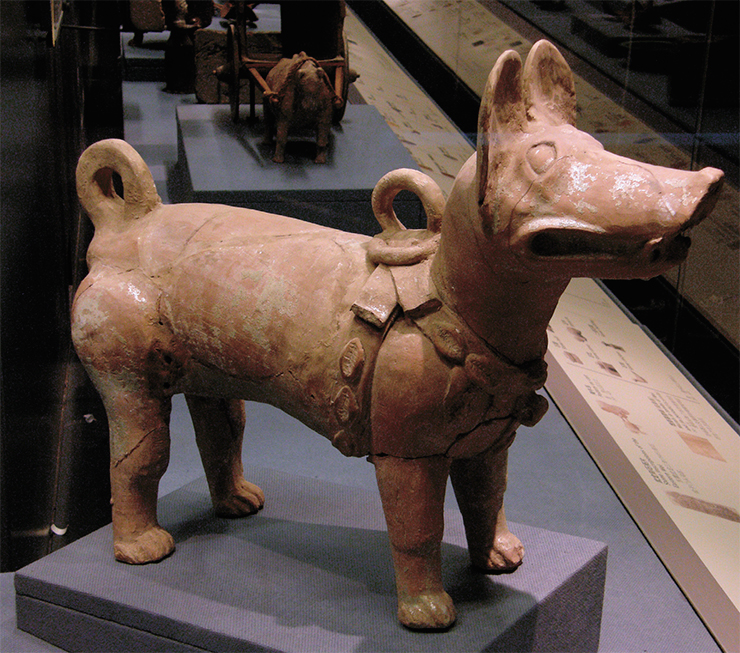
In some Neolithic cultures based in China, such as Dawenkou, Liangzhu and Longshan, the domestic dog, together with the pig, must have been an important source of protein. The dog bones with cut marks found in the cultural layers of archaeological sites, kitchen middens and other contexts show that the animals were slaughtered and butchered, which supports this hypothesis. For example, at the Dawenkou burial site in Yedian, Shandong province, dog bones were found together with pig and chicken bones in a pile of pottery — these could have been the leftovers of sacrificial food.
Both ethnographic materials and written sources evidence that for the Asian peoples eating dog meat was everyday and ritual practice. In modern China, dogs are eaten by the Bouyei, Mulao, and Kawa. Among the traditional festivals of the Zhuang people, there is the Dog Meat Festival observed in the Jingxi, Longlin, and Debao counties of the Guangxi-Zhuang autonomous region. It is celebrated on the fifth day of the fifth month or on the 22nd day of the second month on the lunar calendar. It is believed that the dog has miraculous powers to protect against evil forces, and these powers manifest themselves on this very day. The dog meat is considered to be good for health and able to extend life. This is why on this day every family kills a dog, and if the family is poor and does not have a dog of their own, they buy dog meat at the market. The Han Chinese also have a long history of eating dog meat. Evidence of eating dog meat can be found in Liu An’s Huainanzi (2nd c. B.C.), Xu Shen’s Shuowen Jiezi (1st c. A.D.), and in other ancient and Medieval Chinese texts. Dog meat was an important meat product at the time of the Qin and Han dynasties (Peng Wei, 2007). According to ethnographic data, eating dog meat is often connected with the perceptions of its healing or even magic properties; it is also used as a drug. This suggests that the dog cult formed as early as in the Stone Age.
It should be noted that in ancient times many of the Chinese cultures and ethnic groups stopped eating dog meat and maybe even tabooed it. At some Neolithic sites (Jiahu, Longqiuzhuang) where ritual uses of dogs had been observed, the fossil bones bear no cut marks at all, which must testify that a taboo on eating dog meat was in place.
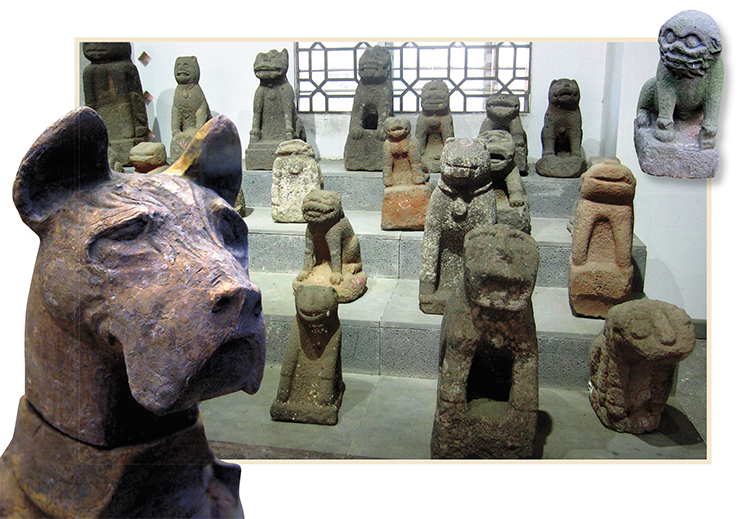
Ethnographers documented that similar bans existed for some other ethnicities of China, especially the peoples of the Miao-Yao group, who believed that their ancestor was the five-coloured dog Panhu. The Manchu people also had a taboo on dog meat as they worshipped the dog as their progenitor, protector and helper.
In ancient China, the dog was used not only for gastronomic purposes, but also for guarding homes, hunting, as a means of transportation and — Importantly! — as a playmate to children. Indications to this effect can be found in later texts, such as Lüshi Chunqiu (3rd c. B.C.) and Liji, or the Book of Rites (1st c. B.C.). So far, however, there are no archaeological data to support these applications of dogs in the Neolithic and Early Bronze Age.
As conclusion to this brief overview, based on Chinese sources, of a very important topic, we would like to express our confidence that the results obtained will make even stronger the ties between the “Town” (Ecumene) and the dogs living there. We will care even more for our four-legged companions, who have accompanied man for the larger part of his diverse history.
References
Alimov I. A. Drevnekitayskiye pamiatniki o sobake (Old Chinese Monuments about the Dog) // Kunstkamera. Ethnography Textbooks. St Petersburg: Peterbyrgskoye Vostokovedeniye, 1994. Iss. 5–6. P. 257–261. [in Russian]
Dmitriev S. V. Domestikatsiya v Kitae: popytka obobshcheniya dannykh (Domestication in China: an attempt to generalize) // Kratkiye soobshcheniya Instituta arkheologii. 2015. Iss. 238. P. 82–97. [in Russian]
Komissarov S. A., Kudinova M. A. Obraz Niebesnogo Psa v kitayskoi mifologii (The image of Sky Dog in Chinese mythology) // Vestnik Novosib. Gos. Univ. Series: History, philology. 2012. V. 11, Iss. 4: Vostokovedeniye. P. 70–79. [in Russian]
Kudinova M. A. Domestikaciya sobaki v ranniy period razvitiya sobakovodstva na territorii Kitaya (Dog domestication and the early period of dog breeding in China) // Vestnik Novosib. Gos. Univ. Series: History, philology. 2015. V. 14, Iss. 10: Vostokovedeniye. P. 16–21. [in Russian]
Novikov A. V., Kudinova M. A. Sobachie miaso v traditsionnoy kitaiskoi meditsine (Dog meat in traditional Chinese medicine) // Problemy arkheologii, etnografii, antropologii Sibiri i sopredelnykh territoriy (Problems of archaeology, ethnography, anthropology of Siberia and adjacent territories): Summary session proceedings, Institute of Archaeology and Ethnography SB RAS 2009. Novosibirsk: Izd-vo IAET SO RAN, 2009. V. XV. P. 475–478. [in Russian]
Mair V. H. Canine Conundrums: Eurasian Dog Ancestor Myths in Historical and Ethnic Perspective // Sino-Platonic Papers. 1998. № 87. 74 p.
Savolainen P., Zhang Ya-ping, Luo Jing, et al. Genetic evidence for an East Asian origin of domestic dogs // Science. 2002. V. 298. N. 5598. P. 1610–1613.
The photographs are the courtesy of the authors and A. Soloviev
The authors and the editors thank Dr. Alexander Soloviev for the kindly providing the photographs


